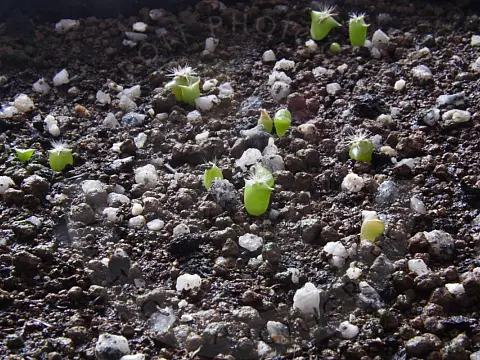How To Make An Eternal Terrarium - Forever Garden In A JarDiscover how to make your own Eternal Terrarium and discover how these fish tank like devices are used to grow tropical plants at home.
Terrariums are a special type of enclosure with a glass case that specialises in re-creating a foreign habitat very different from the room they are located in. Typically they are used to grow plants that can only exist in tropical climates such as croton or selaginella, with a series of lighting, water and circulation systems artificially imitating their native habitat.
Animals can be kept in terrariums too, with turtles being one of the most common inhabitants. However, their prime modus operandi is for botanical or decorative purposes, akin to a fish tank in modern homes and offices. Sealed "Eternal Terrariums" are not suitable for living creatures.
Eternal Terrariums differ from other similar enclosures like insectariums and formicariums. Indeed, a terrarium's focus on plants and flowers makes it in many ways more akin to a botanical garden's tropical glasshouse than an aquarium, with facilities like the Eden Project in the UK and the Biosphere 2 in Arizona sharing much of its technology, albeit on a far larger and more complex scale.
An eternal terrarium, also known as a closed jar terrarium, is a kind of terrarium which is sealed. Eternal terrariums are self-maintaining ecosystems which simply consist of a sealed container with plants and water. Eternal Terrarium does not need too much maintenance. Some closed terrariums like these have survived for more than 40 years without watering or adding any fertilizer. This is because the water cycle happens inside the container and plants that die serve as organic fertilizer for new plants.
What You will Need

To build an eternal terrarium, you will need the following readily available parts.
- Clean container which can be sealed and has a large enough opening to place plants inside.
- Small stones (gravel, pebbles, broken pottery or something similar)
- Potting charcoal
- Sand
- Soil
- Moss and plants
- Funnel
- Chopsticks or long tweezers
- Spray bottle
How to Build an Eternal Terrarium
This project will give you a guide to collecting and cultivating moss and making an Eternal Terrarium.
Step 1 - Moss, Soil and Prop Gathering
When collecting moss to use in your closed Terrarium it is important to harvest the moss and cultivate it for approximately 2 weeks before putting the moss into your jar Terrarium. Cultivating it for two weeks lets you see what it does in closed environments. You can see how the moss will grow, weed out any mouldy spots that appear and see if the moss you have found is suitable for closed environments.

The best way to find moss is to go for a walk in the forest with your eyes down, during or at the end of the rainy season. Take note of the moss patches in your area so you can come back to them. Even if the moss goes brown and looks dead you can bring it back to green quite quickly by harvesting and popping into containers with a little water.
Avoid moss that has gone to seed. When moss has gone to seed it will have little stalks with balls on the end. Do not collect this moss as it will not grow in a Terrarium. If you notice your moss grow little stalks pull it out and throw it in the garden.
Now we have gathered up all the materials we need for the planting, we can go ahead and start constructing our Eternal Terrarium.
Building the Terrarium - Layering the Base
I rinsed my glass container out with Rain X before planting my moss. This ensures that the condensation on the inside runs right back into the bottom.
Begin by placing drainage pebbles at the bottom of the container. If your terrarium will be closed with a lid, you'll want to be sure to add a thin layer of crushed potting charcoal to help keep the soil fresh.
Pour a layer of sand across the top of the rocks, then add soil, making sure to create a hole large enough for the roots of each plant.
Planting the Moss and Plants
Remove your collected moss and plants from the container and brush off the loose soil around the roots. Place your plants in the soil with tweezers, largest to smallest, and lightly pack the soil. Be careful not to overplant! Save room for growth and any ornaments you may decide to place inside.
Place Ornaments and Decorations
Once you've laid out all the plant elements, add moss, stones, twigs or bark to fill out the landscape. If you're feeling creative, try creating a story around all the elements by adding tiny mushrooms, animals or other figurines - accents like this can bring a self-sustaining terrarium to life.
Water the Eternal Terrarium
Water the plants with the spray bottle, but not too much.
Seal it Up
The final step is to seal the eternal terrarium so that water cannot escape. This preserves the new biosphere. You should now place the eternal terrarium in a well-lit area, but not in direct sunlight. If after a few days, you notice condensation on the walls of the container this means that the plants are breathing. This is a good thing!




Care of your Eternal Terrarium
Moss Terrariums can die, or start to look pretty horrible. You can always throw out the insides of the terrarium, wash your decorations and make a fresh one.
Eternal Terrarium Lighting
Closed terrarium plants enjoy diffused or indirect light. If your plants look like they're struggling, try a fluorescent globe or alternate your terrarium's location from time to time. Avoid direct sun as this will burn and cook your plants. Rotate the jar for the even growth of moss.
Watering Eternal Terrariums
I have found that it is generally unnecessary to water them unless you can see your soil looking dry or the walls of the terrarium are not misting up. It's important not to over-water as this can lead to rot or fungus. Condensation is a good sign - it means your plants are breathing. But if you're concerned, leave the lid off for a little while, just not so long that it all dries out. Once the right humidity is established, a closed terrarium can go a month or more between watering, some can even go for years.
Mould in Eternal Terrarium
If you spot mould early you can take off the lid and put the Terrarium in the sun to attempt to kill the mould. You need strong, full sun and will need to spray and replace the lid at the end of the day.










